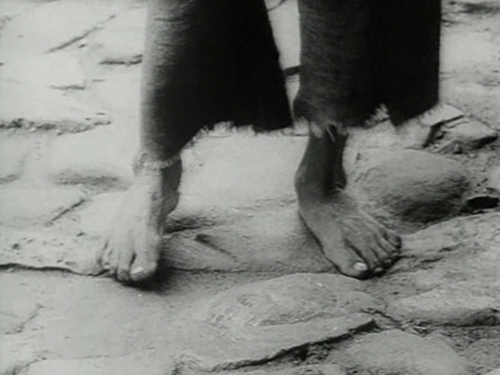
The only film directed by trailblazing feminist Iranian poet Forugh Farrokhzad. She finds unexpected grace where few would think to look: a leper colony where inhabitants live, worship, learn, play, and celebrate in a self-contained community cut off from the rest of the world. Through ruminative voiceover narration drawn from the Old Testament, the Koran, and the filmmaker’s own poetry and unflinching images that refuse to look away from physical difference, Farrokhzad creates a profoundly empathetic portrait of those cast off by society – an indelible face-to-face encounter with the humanity behind the disease. A key forerunner of the Iranian New Wave, The House Is Black is a triumph of transcendent lyricism from a visionary artist whose influence is only beginning to be fully appreciated.
EN
“From the opening sequence of a young women looking in a mirror, her distorted features partially covered by a veil, you are utterly compelled to watch. This compulsion has nothing to do with ridicule or perversity; nor is it a reflection of our contemporary tendency to fetishize the grotesque. The critic Hal Foster has written that for many of us, “truth resides in the traumatic or abject subject, in the diseased or damaged body. Thus body is the evidentiary basis of important witnessing to truth, of necessary witnessing against power.” For Farrokhzad, witnessing the damaged bodies in the Tabriz leper colony became evidence not just of a resistance to power (one section of the documentary does underline the connection between the disease and poverty) but of making a new aesthetic as well.
The sequence of the woman in the mirror sets the film’s tone; slowly and deliberately it inches toward a close up. When it stops, you realize that the young women is looking out at us, as much as she is looking in at the mirror.”
Robert Enright1
“When we see this film the least we learn is how – just like Christ – to look for white teeth in the carcass of a dog. With this film, Forough teaches us that the person who closes his eyes on darkness has committed two mistakes: First, she perpetuates that darkness, because unless we look at darkness we won’t do something to make it bright; and second, by closing our eyes on darkness, we deny ourselves the sight of the amazing light that palpitates in the heart of that darkness and which is called life.”
Mohsen Makhmalbaf
- 1Robert Enright, “Black House, Brilliant Film: Forough Farrokhzad’s The House is Black” (Border Crossings, 2009).
NL
Venus.
Soms in de schemering zien we een heldere ster.
De ster heet Venus.
Venus is heel helder.
De planeet Venus is heel dichtbij ons.
De planeet Venus twinkelt niet naar ons.
Gedicht gelezen door een leerling in The House is Black
“In The House is Black (Forough Farrokhzad, 1963) zien we een monumentaal beeld van een leprapatiënt in een leprakolonie in Iran. Hij zingt en geeft het ritme aan met zijn blote voeten. Zijn ogen zien niets en hij mist stukken van zijn lichaam. Hij geeft het ritme aan door met de overgebleven vingers van zijn hand te knippen. Het zijn slechts fragmenten van zijn lichaam die nog een geluid voortbrengen. Toch heeft dit lied een universele kracht. Zo eenvoudig hij daar staat, wordt hij het centrum van iets veel groters. Hoewel het lied geen woorden bevat, verhaalt het van hun lot. Hij en de andere zieken zijn collectief tot eenzaamheid veroordeeld; door hoge muren afgescheiden van de gezonde mensen. Farrokhzad toont hen in een spiegel en spiegelt in hen de Iraanse gemeenschap. Deze muzikant draagt ondanks alles een genereuze kracht uit, ook al is hij blind. In plaats van een blik terug te werpen, zendt hij muziek uit, die zich als een warmtebron in iedere richting uitbreidt.”
Nina de Vroome

